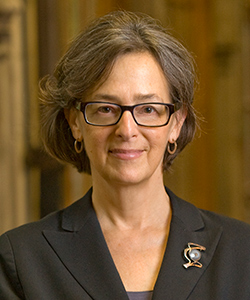Continuing our discussion on global legal education, Carole Silver of Indiana University’s Maurer School of Law responds to Tejani and Aman. Professor Silver is an expert on legal education and the globalization of the legal profession. She has directed major programs at Georgetown and Indiana in these areas in addition to her own empirical research on global legal education.
COMMENT FROM CAROLE SILVER: Riaz Tejani sets out a question that is taken at face value in many venues:“how will paying attention to the transnational contexts of law benefit the ultimate ‘practice’ of American law students?” In his comments at the Harvard Law School panel discussion, Are Law Schools in Crisis? The New York Times Editorial and its Discontents (3/2012; see previous NLR post), Fred Aman noted that this same focus on producing ‘practice-ready’ graduates has captured the current crisis debate about legal education in the U.S. The crisis challenging law schools is defined, in large part, as a failure of new law graduates to secure jobs that will permit them to earn salaries high enough to repay their law school student loans.
But as Aman and others have emphasized, law school is not simply about jobs, it also is about education. He suggested that just as legal education was transformed in the 1970s by the entry of women, perhaps we are witnessing today the beginning of a similar transformation in the shift from essentially national to transnational or global legal education, from law schools dominated by their nationals to the emergence of a group of elite global law schools that value and capitalize on the national diversity of their students and graduates. Bryant Garth and Yves Dezalay suggest that the emergence of globally-focused law schools in China, India and elsewhere will position globalization as a new basis for competition among law schools and law graduates. But this is an issue that largely has been absent from the current debates in the U.S., in part perhaps because the new student population that Aman referred to – the international students – generally have been segregated in U.S. law schools as a result of their choice of an alternative degree program that is other than the core JD degree. This architecture (to borrow from Peer Zumbansen – same panel) may explain why the schools have been slow to recognize the significance of transnational or global legal education, but it also has facilitated using tuition from international students to fund the growth and competition of law schools. While the absence of a global perspective is not surprising in light of the marginalization of international law students and graduates by U.S. regulators, employers and law schools, the current U.S. debate is limited by its failure to consider its relationship to a larger context, including globalization and higher education.

